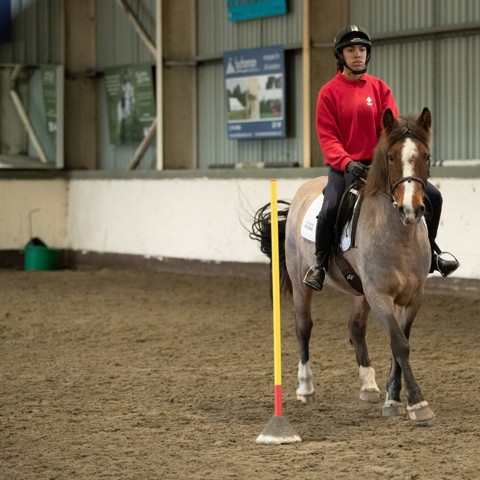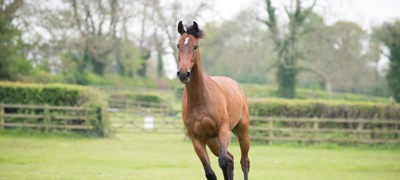All riders need to be flexible, balanced and have good core strength and stamina to be able to sit in the correct position and support themselves on the horse.
Your fitness and the impact on your riding
A horse rider needs to be physically fit to do their job well. A tired rider becomes an unbalanced rider. As you tire, your ability to maintain your posture and balance in the saddle is decreased, along with your reaction rates, which means your horse must constantly adjust his movement and balance to compensate.
This can increase the risk of injury to you, but also your horse as extra strain is placed on his back.
Being fit to ride means you will find it much easier to keep your posture, move in balance with your horse and communicate clearly to your horse and breathe.
A balanced rider will sit centrally in the saddle distributing their weight evenly across their horses back making it easier for the horse to move evenly and balance himself underneath you.
Get the most out of your riding
As with any sport, riding takes a lot of practice to develop and perfect the skills required.
Not all riders will need the same level of fitness, as it will depend on the level you ride at and the activities you take part in. Someone who enjoys hacking out will not have the same fitness requirements as a rider who competes regularly.
If you are a weekly rider at your local centre, working on your fitness between your riding sessions will help you to progress quicker, improve your position and stamina enabling you to get more out of your lessons.
If you are a competition rider, you should take your fitness as seriously as you take your horse’s. Remember that riding is a team sport with you and your horse working together. Find out more about developing a fitness programme for your horse.
Improving your fitness
If you are new to horse riding, a horse owner, or a weekly rider, working on your own fitness outside of riding can not only be of benefit to you but also the horses you ride.
Taking part in other types of exercise or sport will help improve your general fitness.
If you want to specifically target your exercise for riding, look for activities that will improve your cardiovascular fitness, core strength, flexibility, suppleness and balance.
If you are starting a new fitness routine remember to start slowly and build up gradually, similarly to what you would do when getting a horse fit. You don’t want to cause yourself an injury early on.
Cardiovascular
Cardiovascular fitness relates to your heart and the way it performs during exercise. Horse riding requires a lot of energy and stamina. Your heart rate increases, and you can become out of breath very quickly depending on the activity you are doing.
Building your cardiovascular fitness will help you to ride for longer without becoming out of breath, have more energy to focus on your horse and you won’t interrupt the flow of your session by stopping to catch your breath.
Cardio exercise is anything that increases your heart rate for example walking, running, swimming or cycling.
Core Strength
Core strength is very important for all riders, regardless of your level of experience or the discipline you do.
Through a stronger core, you will find it easier to maintain your posture and stability making you feel more secure and confident when you ride. Correct posture in the saddle enables you to use your aids more effectively to communicate with your horse.
As you progress as a rider and move up through the levels your core becomes even more important as you learn more advanced movements such as sitting trot, lateral work, light seat or jumping, which require the rider to have a lot of body awareness.
Flexibility
Horse riders need to be equally muscled and flexible on both sides of their body. If you are unbalanced or have any muscle tightness it is quickly highlighted on the horse. This can restrict your ability to move in harmony with your horse which can affect how the horse moves and his ability to use his muscles correctly.
Muscle tightness can also lead to restriction and sometimes pain in other areas of the body as they compensate for the restricted movement. For example, tight hip flexors can lead to lower back pain.
By doing regular stretching routines you can improve your flexibility on the ground which in turn will improve your flexibility on the horse.
Activities such as Yoga and Pilates both focus on building general core strength and flexibility. EquiPilates is aimed at horse riders and targets the specific muscles and biomechanics used for riding.
Remember to warm up
At the start of a ridden session, you will normally work through exercises to warm up your horse and this in turn is a bit of a warm up for yourself. But have you ever thought about doing warm up exercises yourself before getting on the horse?
This could be as straight forward as walking your horse inhand to get your blood flowing or doing some stretches to loosen off your muscles and reduce any tension before you get in the saddle.
Focusing on any areas of tightness by working to release any tension before you get on a horse will help you to achieve a better position and better balance as soon as you sit in the saddle.
Similarly stretching and cooling down after a ride and once you have dismounted can help prevent muscle soreness.







